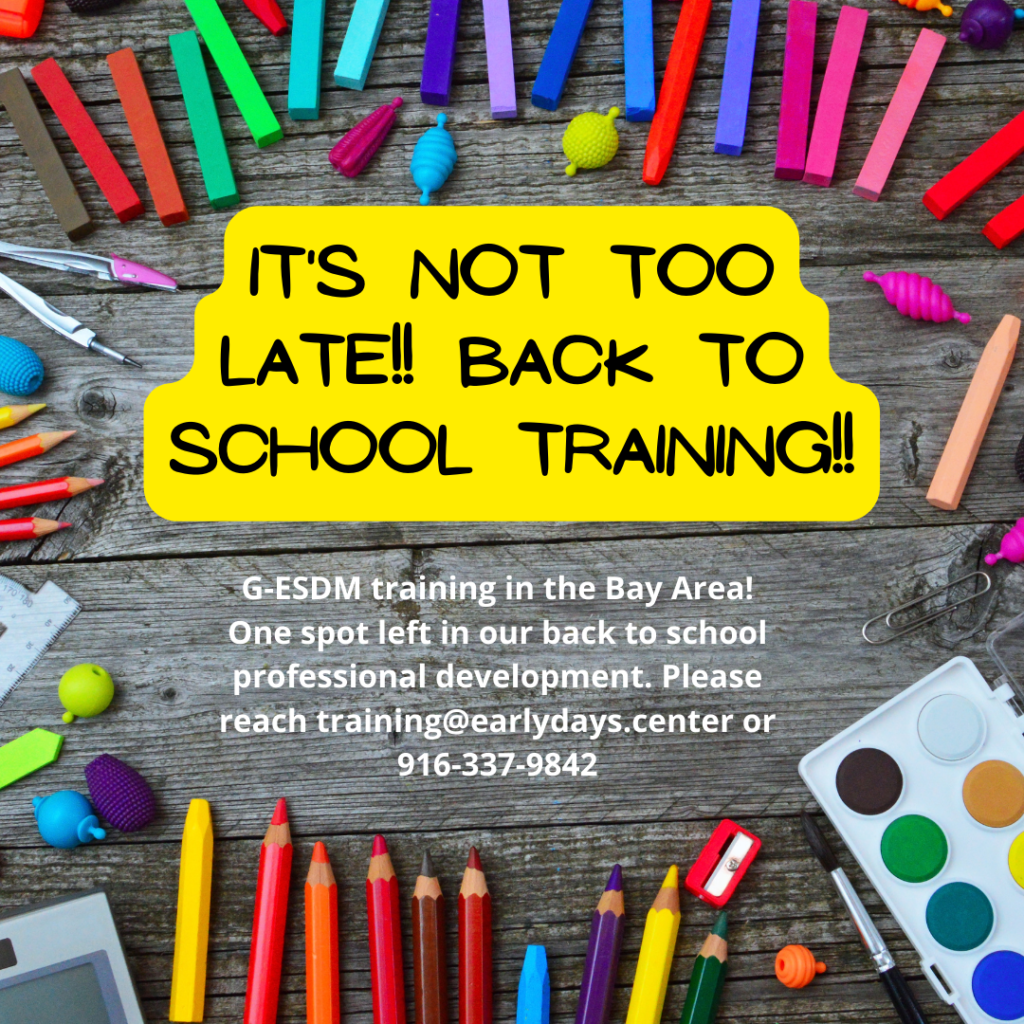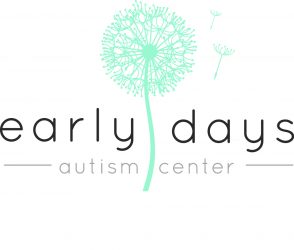
GESDM PROGRAM DEFINED…by Dr. Sally Rogers
Definition of a Group-based ESDM
(G-ESDM) Intervention Program
The G-ESDM draws on the literature documenting the beneficial effects of early interaction with peers and preschool experiences for social-cognitive development. It capitalizes on the widespread availability of daycare/preschool programs in the community, the culturally universal tradition of educating young children in group settings, and the social and learning opportunities provided by peers.
1. Definition: A G-ESDM preschool is a group-based intervention program in which an autistic child is receiving intervention that follows all the ESDM principles (as defined by the manuals 1,2,3 with learning activities embedded within a group early educational program.
2. Staffing: The adults responsible for carrying out the on-site daily intervention, both paraprofessional and professional, are all trained in ESDM and deliver it at acceptable levels of fidelity. An onsite ESDM certified therapist is responsible for training and maintaining ESDM Fidelity of implementation for all staff members. This onsite staffing team has ongoing access and input from professionals with in early childhood education, applied behavior analysis, and SLP, or other core disciplines that carry out ASD intervention in a specific country and culture. Communication regarding intervention plans with a child’s therapists outside the program (OT, PT, pediatrics) occurs.
3. Staff ratios: For activities that provide teaching for a child with autism G-ESDM involves a ratio of at least 1-3 or 1-4 professionals and/or paraprofessionals trained to fidelity in order to assure sufficient number of directed learning opportunities across the day. In specialized classrooms this is the ratio seen during all learning activities. In an inclusive classroom, this is the ratio seen when learning activities are being carried out with the child with autism. This ratio does not include activities like outdoor play in which ratios need to be higher to manage staff needs. In large and small group activities, the staff assignments provide for 1:1 engagement of a staff member with a child with autism actively teaching to the child’s objectives in interaction with the adult or in interactions with other children and supported by the adult as per child objectives and teaching plan.
4. Proportion of time that learning is taught in a group: Most of the child’s learning time (80%) occurs in the group situation among peers, interacting and responding to the group leader’s or the peers’ communications (rather than a 1:1 support person, who maybe providing “invisible” support 1,2). Some programs combine small group activities taught following G-ESDM principles with considerable individual ESDM intervention or other therapies so that children spend much less than 80% of their time in small group learning. While this approach does not meet the definition of Group ESDM Preschool Program presented here, it is a perfectly acceptable way to deliver ESDM services. There are no limitations on ESDM therapists in using the toolbox of ESDM intervention techniques in whatever combinations work best for their situations and their enrolled children and families. The purpose of this document is to define a Group ESDM Program for families and for professionals, for clarity and consistency. In a group ESDM program, all or almost all child learning occurs with peers in group interactions.
c. Fidelity of ESDM implementation: the G-ESDM fidelity tools define the organization and implementation of the G-ESDM classroom. There are three measures – the 1:1 fidelity tool, the group fidelity tool, and the classroom environmental measure fidelity tool. All are published in the G-ESDM manual 1. G-ESDM fidelity of staff performance is assessed in videos while teaching to the group. Fidelity checks on all 3 are conducted regularly throughout the year for all staff working with children with ASD and training is conducted as needed to maintain fidelity on each instrument.
e. Team leader (key worker): one person is responsible for assuring that a specific child with ASD is receiving the program as planned daily . The team leader assures that program data are being examined for progress very frequently (at least biweekly) and that lack of progress on any objective results in changes in teaching plan as per the ESDM manuals.
f. Curriculum, objectives, and data collection: The ESDM curriculum tool or an equivalent is used to write individual objectives for the child with ASD regularly (quarterly update is recommended) and most/all objectives are addressed daily in the group learning activities. Objectives address all areas of delay or need. At least one or more child objectives are addressed in every group and every individual learning activity. One or more objectives focus on peer-peer social and communicative interaction skills and are taught within peer-peer interactions daily. Communication and social objectives are addressed in all activities. Objectives are broken into small learning steps and data on learning steps are taken during or immediately after each activity block. All objectives are taught and sampled multiple times across a week, with the majority taught and sampled every programmatic day.
g. Progress review: regular progress reviews that examine progress data and define need for programmatic changes occur weekly or twice monthly. Changes are implemented within the week.
h. Parent/caregiver coaching: parents and other caregivers as appropriate receive ongoing coaching from program staff members to implement learning opportunities in everyday activities at home and in other natural settings in accordance with family routines, child objectives and behavior plans. Objectives are also written as needed to support skills that are specific to family routines outside of the classroom as needed by the family.
References
- Vivanti, G., Duncan, E., Dawson, G., & Rogers, S.J. (2016). Implementing the Group-Based Early Start Denver Model for Preschoolers with Autism. Cham, Switzerland: Springer.
- Rogers, S.J., & Dawson, G. (2010) The Early Start Denver Model for Young Children with Autism: Promoting language, learning, and engagement. NY: Guilford.
- Rogers, S.J., Vismara, L.A., and Dawson, G. (2021) Coaching parents of young children with autism: Promoting connection, communication, and learning. NY: Guilford Press.
Every Child Foothills, Back to School
Every Child Foothills Leadership Team Celebrated Back to School…2022. We are ready to welcome the school year with open hearts and ready hands. Our second Every Child demonstration program utilizing the GESDM



